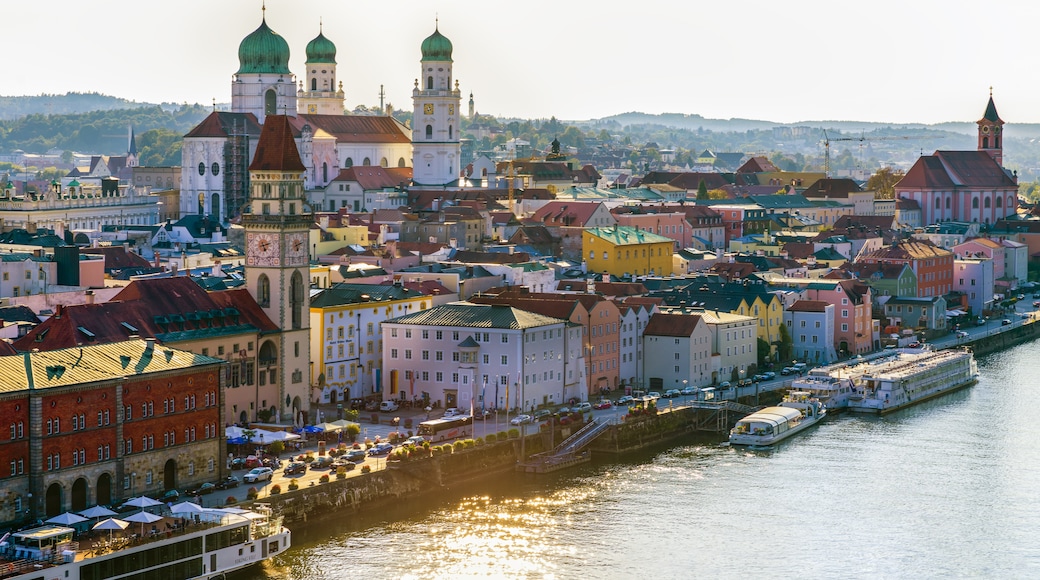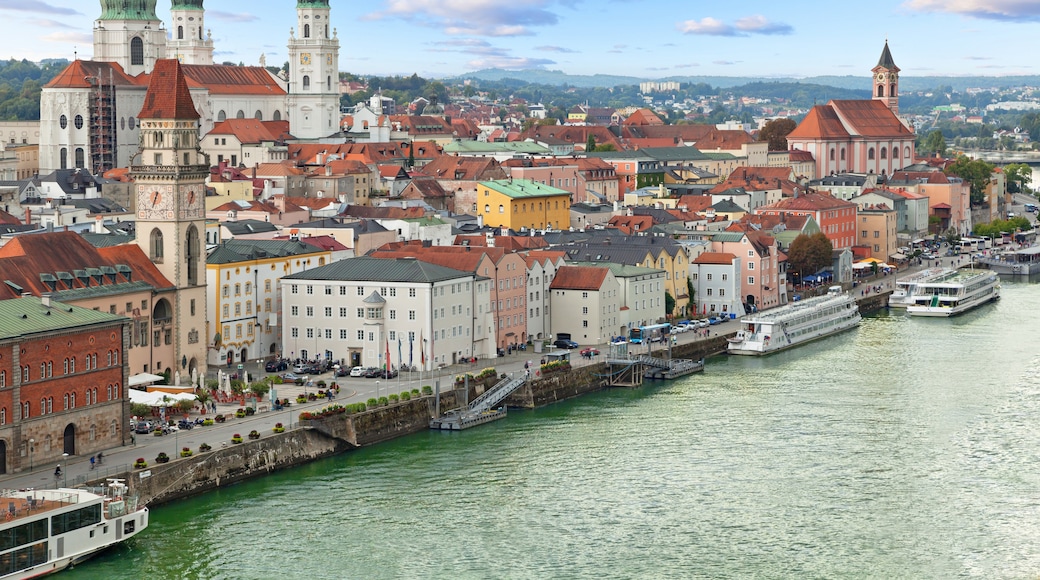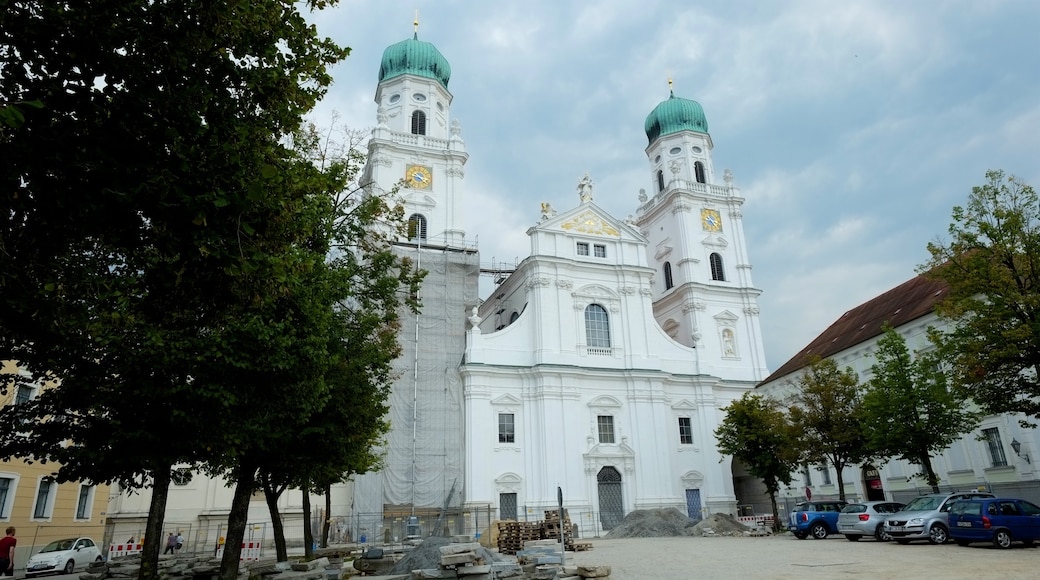This former Roman settlement (once called Batavia) is located close to the Austrian border at the intersection of three rivers: the Danube, the Inn and the Ilz. The old town, the “Venice of Bavaria”, is characterised by its Inn-Salzach-style buildings created by Italian architects. St. Georgsberg mountain towers over the land at a height of 108 metres on the peninsula between the Danube and the Ilz. The impressive Veste Oberhaus fortress sits enthroned on top of it. The fortress was founded in 1219 and served as the residence of the Bishop of Passau. Why not visit the municipal museum here and discover its interesting historic and folklore exhibits as well as the significant Bavarian collection of paintings. St. George’s castle church dazzles with its elaborate Gothic frescoes. You will get spectacular views over Passau and its picturesque rivers and countryside from the church’s observation tower.
The old town of Passau is found on the peninsula where the Inn and Danube rivers meet. St. Stephen’s Cathedral, one of the largest baroque churches north of the Alps, towers magnificently over the town below. Resplendent altars, masterful paintings and stucco sculptures make a visit to the 1693 cathedral a cultural delight. The high tower of the city hall can be seen for miles around. The 38-metre-high tower was built on the banks of the Danube in the 14th century. Impressive colossal paintings, including the Einzug der Kriemhild in Passau (The Entrance of Kriemhild in Passau), embellish the baroque city hall rooms. One of the main attractions on a city break in Passau is the Glass Museum, one of the most world-renowned exhibition centres of its kind. It’s not just for filigree art lovers: any visitor will be enthused by the valuable Bohemian glasses dating from 1700 to the modern day.
You can’t go on a mini-break to Passau without visiting the grand Neue Bischöfliche Residenz (New Bishop’s Residence), home to the cathedral treasury museum and diocesan museum. This vast Viennese late-baroque-style building was built in 1730 in the old town and displays liturgical vestments, valuable monstrances and impressive panel paintings. The district of Innstadt is situated east of the Inn river. It was here in 1982 that the Römermuseum Kastell Boiotro (Roman Museum) was opened in a late-Medieval house. In 280AD the Romans built a military camp here. Outside you can visit the imposing remains of the castle walls and watchtowers. What’s more, the museum displays interesting archaeological artefacts from the east Bavarian area from the Stone Age and Middle Ages right up to the modern era. A city trip to Passau, the Nibelung city where the famous Song of the Nibelungs originated, will take you to one of the most historic cities in Germany.









